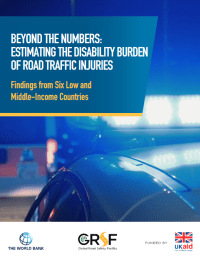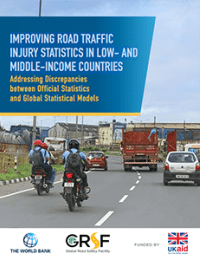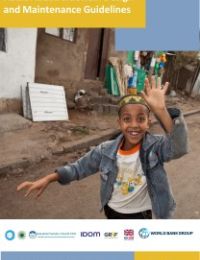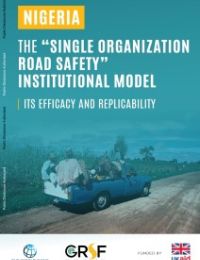Publications
1-6 of 6
-
Post-Crash Health Care
Beyond the Numbers: Estimating the Disability Burden of Road Traffic Injuries
November 2023
-
Road Safety Data
Improving Road Traffic Injury Statistics in Low- and Middle-Income Countries
November 2023
- National decision-makers recognize the issue of underreporting but tend to dismiss higher estimates by global statistical models.
- Most countries use WHO GSRRS estimates.
- National health surveys and censuses in LMICs often contain relevant information, and minor modifications can greatly improve their usage for such measurements.
- Incorporating national health survey data into global statistical models can help resolve discrepancies and increase confidence in estimates.
- Integrating epidemiological data sources into global statistical models (GBD, GHE, GSRRS) to reduce discrepancies and increase confidence in their estimates.
- Including relevant questions in upcoming national data collections to facilitate epidemiological measurements of road traffic injuries.
- Encouraging local involvement in data production for better estimates.
- Enhancing coordination between the Institute for Health Metrics and Evaluation and the World Health Organization to improve estimates and reduce inconsistencies.
-
-
-
Road Safety Management
Nigeria: The “Single Organization Road Safety” Institutional Model, its Efficacy and Replicability
July 2022
-
What are the strengths and weaknesses of this model and what could be done to improve its’ efficiency and effectiveness?
-
How efficient and effective is the “Single Organizational Model” institutional setup (both federal and state levels) in dealing with the road safety issues in Nigeria?
-
Can this model be replicated in other LMICs and what are the factors that will determine the replicability of the model in those countries?
-
What are the steps in setting up “Single Organizational Model” institutions in LMICs?
-
Road Infrastructure
Practical Guide for Road Safety Auditors and Inspectors in Ukraine (Ukrainian)
July 2022
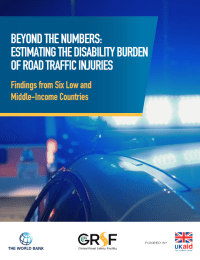
It is well-documented that road crashes claim around 1.35 million lives each year and rank as the eighth leading cause of death globally, causing huge burdens for economies, health systems, and transport networks. However, beneath the sobering fatality statistics lies a largely unexplored landscape: the staggering toll of disabilities induced by road crashes. Until now, the focus of road safety research and policy discourse has predominantly revolved around fatalities, which has limited our understanding of traffic-related injuries and disability burdens at the individual, community, and national level.
To address this critical knowledge gap, this pioneering study—involving over 2,300 patients hospitalized for road crash injuries—provides valuable insights into the prevalence, causes, and long-term impacts of crash-related disabilities. By broadening the discussion beyond fatalities to the often-overlooked issue of disability, the report paves the way for a more holistic perspective on road safety impacts, which can inform more effective road safety policies.
This report is a call to action for comprehensive and context-specific interventions that encompass both the transport and health sectors. Effective measures may include implementing safety regulations, enhancing emergency services, strengthening rehabilitative care, and expanding social safety nets to ease the financial burden on crash survivors. Collaborative efforts between governments, global and regional organizations, civil society, and other stakeholders will be indispensable.
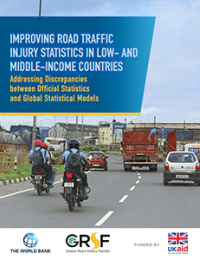
Road safety is a global health and economic issue that disproportionately affects low- and middle-income countries (LMICs). Precise data is crucial for understanding the full scope of the problem and developing effective interventions, but LMICs struggle to collect comprehensive data due to limited resources, underdeveloped health systems, and inconsistent data collection processes.
To overcome reporting gaps, three major global statistical models are utilized: The Institute for Health Metrics and Evaluation Global Burden of Disease (GBD) study, the World Health Organization (WHO) Global Status Reports on Road Safety (GSRRS), and WHO Global Health Estimates (GHE). However, discrepancies exist among these models and between them and official country statistics. They often estimate significantly higher road traffic fatalities and injuries than official LMIC statistics.
This GRSF study identifies the reasons behind statistical discrepancies and outlines strategies to strengthen modeling efforts. This involved qualitative research, a systematic review of national data availability, and four case studies in Brazil, Cambodia, Ethiopia, and Tanzania.
Key findings include:
Recommendations include:
To achieve the goal of the Second United Nations Decade of Action for Road Safety (reducing road traffic fatalities and injuries by 50% by 2030), substantial resources need to be allocated to road safety and accurate reporting and statistical estimates are required.
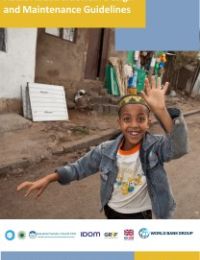
Walking is a predominant mode of travel in Addis Ababa representing more than half of the daily trips. The mild climate in Addis Ababa is conducive for this healthy and green mode of transport. However, sidewalks are often narrow, uneven, obstructed, or non-existent, causing discomfort and road safety risks to the most vulnerable road users: pedestrians. Studies done by the WHO and the Government showed that AA has disproportionately high pedestrian fatalities.
The study on Addis Ababa Sidewalk Safety and Improvement takes the approach of integrating digital technology and Urban Inventory in sidewalk surveys, applies the Global Walkability Index in sidewalk assessments, and adapts the global best practice to the local context. The Addis Ababa Sidewalk Design and Maintenance Guidelines seek to promote the development of quality pedestrian infrastructure and environments, based on the condition’s assessment and global best practices. The design specifications and visual rendering provide recommendations for the policy makers to consider when developing the City’s design and maintenance standards for urban roads, sidewalks, public spaces, and transit-oriented development, some of which are being carried out as part of the technical assistance program of the World-Bank financed Transport Systems Improvement Project (TRANSIP).
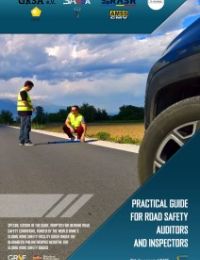
After almost two decades of experience with Road Safety Audit (RSA) Worldwide, this procedure is now recognized as one of the most efficient engineering tools. RSA is a highly efficient and cost-effective engineering tool for improvement of safety on roads. It is much cheaper to identify road safety deficiencies in the process of design than later after construction is completed. RSAs are among the most cost-effective investments a Road Authority can undertake.
With its EU Directive No. 2008/96 and amendment 2019/1936 on road infrastructure safety management, the European Union (EU) made a clear decision that RSA will be mandatory for the Trans-European Road Network (TERN) and main roads. This Directive contains another tool called Road Safety Inspection (RSI) on safety deficiencies of existing roads. The RSI is very similar to the process of Road Safety Audit in the pre-opening phase of newly constructed roads. RSIs are essential for the redesign and upgrading of existing roads, and these are done in many countries to give the designers insights and direction for safety improvements. Given that, the purpose of this practical guide is to provide practical guidance to those doing RSAs and RSIs, the examples of typical design deficiencies shown should be useful to both road safety inspectors and road safety auditors.
This document draws on the more comprehensive guidelines and manuals on Safety engineering mentioned in the acknowledgements but deliberately focuses only on these issues of direct relevance to road safety auditors/inspectors and to the road safety reports that they must prepare, including of recommendations for improvements.
This is a special edition of the guide, adapted for Ukraine road safety conditions and legislation, funded by the World Bank‘s Global Road Safety Facility (GRSF) under the Bloomberg Philanthropies Initiative for Global Road Safety (BIGRS).
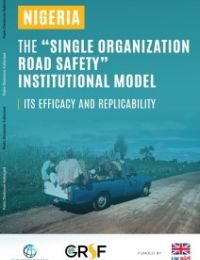
This study is one part of a comprehensive study of lead road safety agencies in low- and middle-income countries (LMICs), which is being conducted on a collaborative basis by the World Bank, the World Health Organization, and the African Development Bank. This particular study is supported by UK Aid through the World Bank’s Global Road Safety Facility (GRSF). It focuses on the case of Nigeria, a federal republic with three tiers of government - federal (central), state and local governments - and its single institutional model for road safety.
This report responds to the following questions:
Download the report to learn more!
RESOURCES ⌵︎
ACKNOWLEDGMENTS ⌵︎
‘The “Single Organization Road Safety” Institutional Model, its Efficacy and Replicability’ Study is supported by UK Aid through GRSF. The Report was written by three main authors: Martin Small, Mustapha Azzouzi and Arpita Roy. The study was led by Farhad Ahmed (Senior Transport Specialist) with support from Md. Towshikur Rahman, who was responsible for the overall coordination.

Після майже двох десятиліть досвіду проведення аудиту безпеки дорожнього руху (RSA) у всьому світі ця процедура визнана одним із найефективніших інженерних інструментів. RSA є високоефективним і економічно вигідним інженерним інструментом для підвищення безпеки на дорогах. Набагато дешевше виявити недоліки безпеки дорожнього руху в процесі проектування, ніж пізніше після завершення будівництва. RSA є одними з найбільш рентабельних інвестицій, які може здійснити дорожнє управління.
У своїй Директиві ЄС № 2008/96 і поправці 2019/1936 щодо управління безпекою дорожньої інфраструктури Європейський Союз (ЄС) прийняв чітке рішення про те, що RSA буде обов’язковим для Транс’європейської мережі доріг (TERN) і магістральних доріг. Ця Директива містить інший інструмент під назвою «Інспекція безпеки дорожнього руху» (RSI) щодо недоліків безпеки існуючих доріг. RSI дуже схожий на процес аудиту безпеки дорожнього руху на етапі перед відкриттям новозбудованих доріг. RSI мають важливе значення для редизайну та модернізації існуючих доріг, і вони проводяться в багатьох країнах, щоб дати проектувальникам зрозуміти та вказати напрямки для покращення безпеки. Враховуючи те, що метою цього практичного посібника є надання практичних вказівок тим, хто проводить RSA та RSI, наведені приклади типових недоліків конструкції мають бути корисними як інспекторам безпеки дорожнього руху, так і аудиторам безпеки дорожнього руху.
Цей документ спирається на більш вичерпні рекомендації та посібники з техніки безпеки, згадані у подяках, але навмисно зосереджується лише на тих питаннях, які мають безпосереднє відношення до аудиторів/інспекторів з безпеки дорожнього руху та до звітів з безпеки дорожнього руху, які вони повинні підготувати, включаючи рекомендації щодо покращення.
Це спеціальне видання посібника, адаптованого до умов безпеки дорожнього руху та законодавства в Україні, фінансованого Глобальним фондом безпеки дорожнього руху (GRSF) Світового банку в рамках Ініціативи Bloomberg Philanthropies for Global Road Safety (BIGRS).

